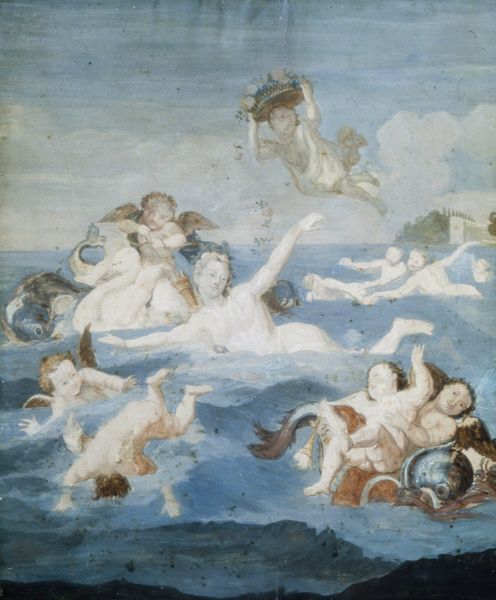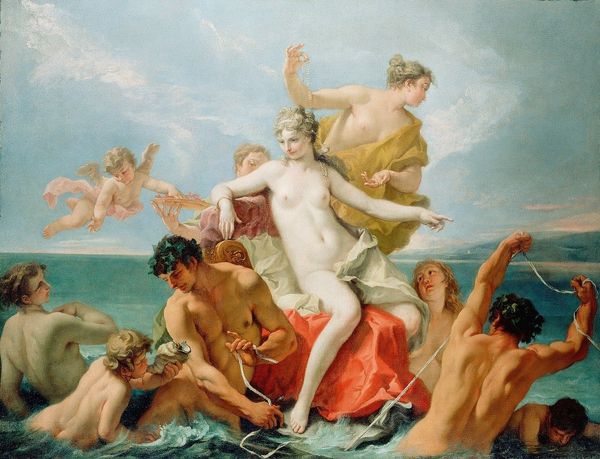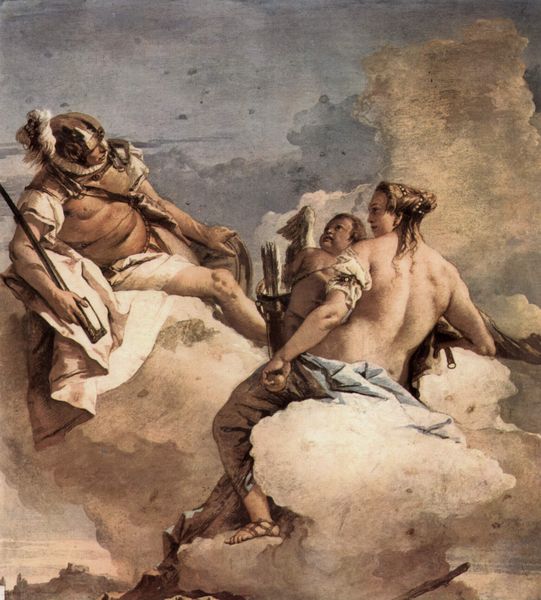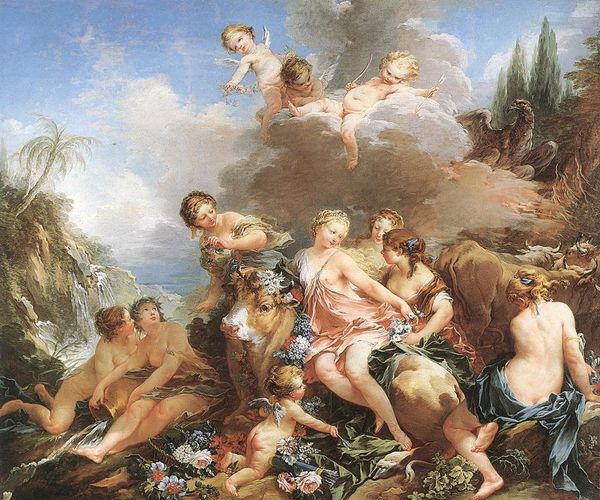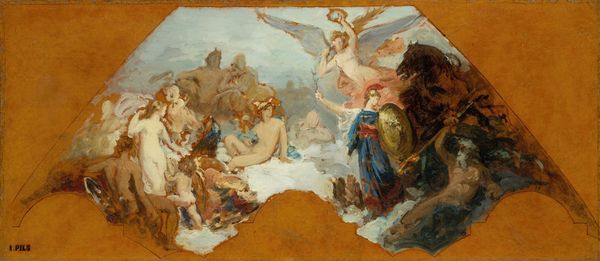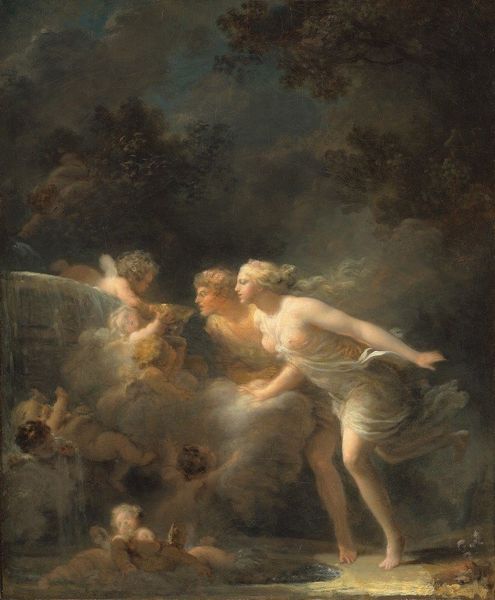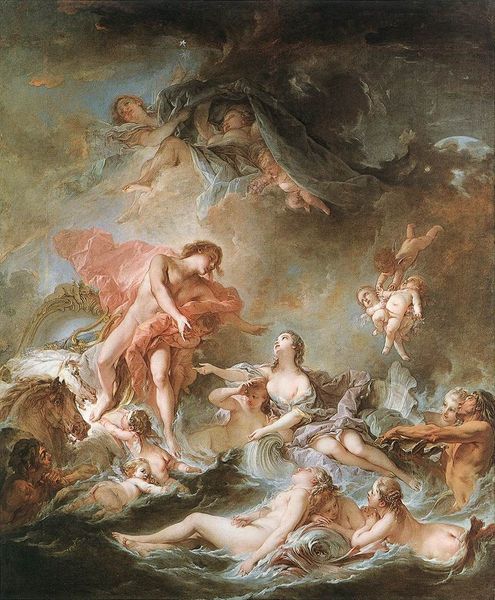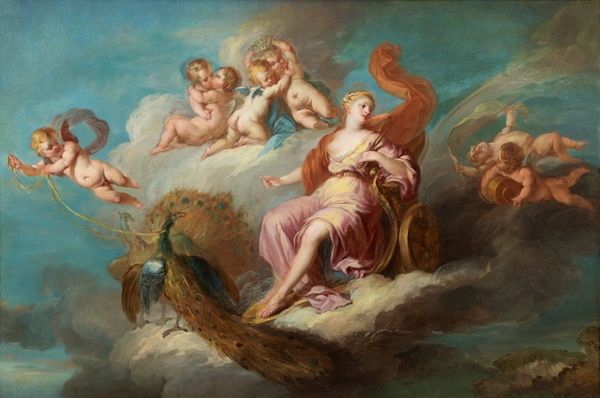
Dimensions: 86 x 62 cm
Copyright: Public domain
Curator: This immense oil on canvas is titled "Olympus," a history painting executed in 1764 by Giovanni Battista Tiepolo. It currently resides here at the Museo del Prado in Madrid. The work showcases figures from Roman mythology, set against a turbulent, swirling skyscape. Editor: My initial impression is that it's gloriously chaotic. The composition feels dynamic, as if everyone and everything is caught in a perpetual state of movement. And there is a palpable sense of lightness and elevation, which perhaps is fitting for the subject matter. Curator: Indeed. Tiepolo, a master of the Baroque style, employed a characteristic palette of pastel colors and dramatic perspective to evoke a sense of grandeur, and also movement. The painting was initially created for a ceiling, and was created as an allegory for royal virtues. Editor: Seeing it removed from that original architectural context impacts its narrative. How does detaching "Olympus" from the palace it adorned alter its impact as a form of aristocratic propaganda and thus its current reception in our modern era, for a museum audience? Curator: That's a compelling point. Removed from the ceiling, it transforms from an explicit celebration of power into a more contemplative exploration of mythological themes. What once operated within the frame of political messaging shifts. Editor: The figures, of course, are so idealised – their bodies perfected according to Western beauty standards, and also mostly nude which, when viewed from a contemporary lens, adds layers to how we consider the artist's role. Was it mere aesthetic delight, or do these portrayals further entrench social biases, for example about whiteness and gender norms? Curator: Such depictions were conventional, certainly, for history painting. They harked back to classical ideals. Editor: Precisely. It raises questions. Curator: "Olympus," in its historical context, reflects the period’s obsession with mythology and idealized portrayals of power and nobility. As its historical influence extends, we might continue to unravel our understandings. Editor: And confront our aesthetic assumptions in modern institutions like the Museo del Prado, which perhaps would require additional curatorial commentary about the time, biases and all, in our era. Thank you!
Comments
No comments
Be the first to comment and join the conversation on the ultimate creative platform.


